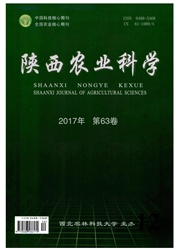

 中文摘要:
中文摘要:
中国的黄土高原经历了过长的干旱和严重土壤侵蚀。在降水和陆地使用的变化大部分在这个区域决定流量和沉积产量的动力学。趋势和变化分析在黄土高原溪谷区域从 Yanwachuan 分水岭在水文学数据(1981-2012 ) 上被执行学习流量和沉积产量的进化特征。也对比方法的一个时间系列被用来在流量和沉积产量上评估降水和土壤和水保存(SWC ) 的效果。尽管在年度降水和年度流量没有重要变化,年度沉积产量从 1981 ~ 2012 显著地衰退了。年度流量和年度沉积产量的变化点分别地发生在 1996 和 1997。分别地,与那相比,在基线,在变化时期(1997-2012 ) 的时期(1981-1996 ) ,年度流量和年度沉积产量在 17.0% 和 76.0% 减少了,但是年度降水增加了 6.3% 。流量在洪水季节和正常季节减少了,但是在旱季增加了,当沉积产量显著地在整个学习时期衰退了时。SWC 措施显著地作出贡献到年度流量(137.9%) 和年度沉积产量(135%) 的减小并且比降水更重要。生物措施(林地和草地) 说明了 61.04% 全部的流量减小,当工程措施(平台和水坝) 说明了 102.84% 全部的沉积收益减小时。而且, SWC 措施有积极生态的效果。这研究在黄土高原上为土壤侵蚀控制提供一个科学基础。
 英文摘要:
英文摘要:
The Loess Plateau of China has experienced a lengthy drought and severe soil erosion.Changes in precipitation and land use largely determine the dynamics of runoff and sediment yield in this region. Trend and mutation analyses were performed on hydrological data(1981-2012) from the Yanwachuan watershed in the Loess Plateau Gully Region to study the evolution characteristics of runoff and sediment yield. A time-series contrasting method also was used to evaluate the effects of precipitation and soil and water conservation(SWC) on runoff and sediment yield. Annual sediment yield declined markedly from 1981 to 2012 although there was no significant change in annual precipitation and annual runoff. Change points of annual runoff and annual sediment yield occurred in 1996 and 1997,respectively. Compared with that in the baseline period(1981-1996), annual runoff and annual sediment yield in the change period(1997-2012)decreased by 17.0% and 76.0%, respectively, but annual precipitation increased by 6.3%. Runoff decreased in the flood season and normal season, but increased in the dry season, while sediment yield significantly declined in the whole study period. The SWC measures contributed significantly to the reduction of annual runoff(137.9%) and annual sediment yield(135%) and were more important than precipitation. Biological measures(forestland and grassland) accounted for 61.04% of total runoff reduction, while engineering measures(terraces and dams) accounted for 102.84% of total sediment yield reduction. Furthermore, SWC measures had positive ecological effects. This study provides a scientific basis for soil erosion control on the Loess Plateau.
 同期刊论文项目
同期刊论文项目
 同项目期刊论文
同项目期刊论文
 Fractal Characteristics of Soil Particle-Size Distributions under Different Landform and Land-use Ty
Fractal Characteristics of Soil Particle-Size Distributions under Different Landform and Land-use Ty 期刊信息
期刊信息
